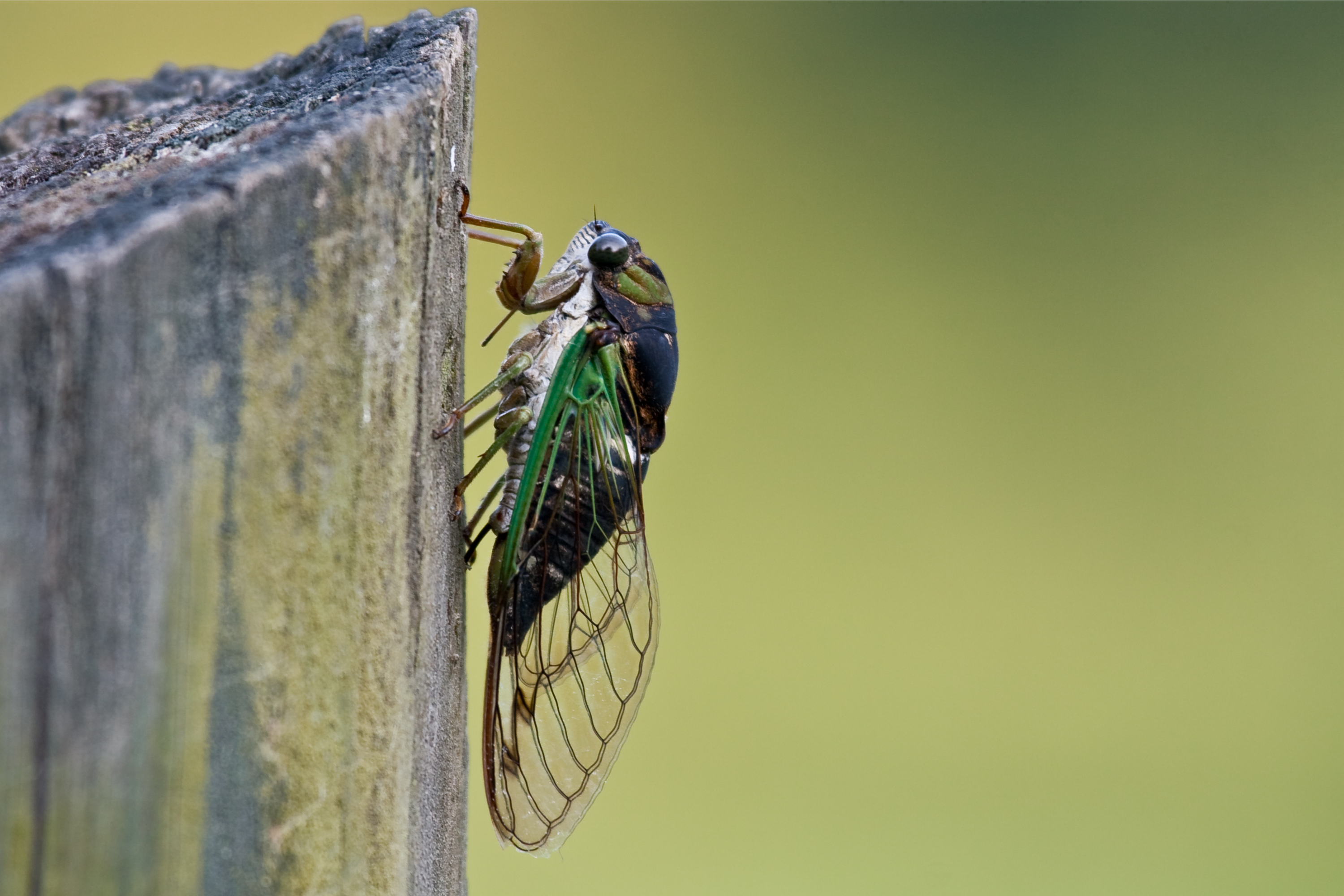Morning cicada
(Neotibicen tibicen)

Description
Neotibicen tibicen, known generally as the swamp cicada or morning cicada, is a species of cicada in the family Cicadidae. It is widespread across much of the eastern and central United States and portions of southeastern Canada. There are two subspecies, N. tibicen tibicen and N. tibicen australis, with the latter replacing subspecies tibicen in portions of Florida, Georgia, and Alabama. N. tibicen is active particularly in the morning; hence its common name, the morning cicada. It is strictly ectothermic, and only becomes active in the morning after basking in the sun to raise its body temperature. The species' name was Tibicen chloromerus, but in 2008 it was changed to Tibicen tibicen because the cicada was determined to have been described first under this specific epithet. The species was moved to the genus Neotibicen in 2015. N. tibicen is the most frequently encountered Neotibicen because it often perches on low vegetation. Likewise, it is arguably the most common Neotibicen in North America. Cicadas of the genus Neotibicen are large-bodied insects of the family Cicadidae that appear in summer or early fall in eastern North America. Common names include cicada, harvestfly, jar fly, and the misnomer locust. In 2015, these species were moved from the genus Tibicen (now genus Lyristes Horvath, 1926), which was redefined in the twenty-first century to include only a few European species, while species from the Western United States and Mexico are now placed in a separate genus, Hadoa. In addition, several former Neotibicen species have been moved to the genus Megatibicen. Neotibicen species are the most commonly encountered cicadas in the eastern United States. Unlike periodical cicadas, whose appearances aboveground occur at 13- or 17-year intervals, Neotibicen species can be seen every year, hence their nickname "annual cicadas". Despite their annual appearances, Neotibicen probably take multiple years to develop underground, because all cicada species for which life cycle lengths have been measured do so, except when growing as agricultural pests. Their annual reappearance is presumably due to overlapping generations. Neotibicen cicadas are 1-2 inches (25-51 mm) long, with characteristic green, brown, and black markings on the top of the thorax, and tented, membranous wings extending past the abdomen. The fore wings are about twice the length of the hindwings.
Taxonomic tree:







